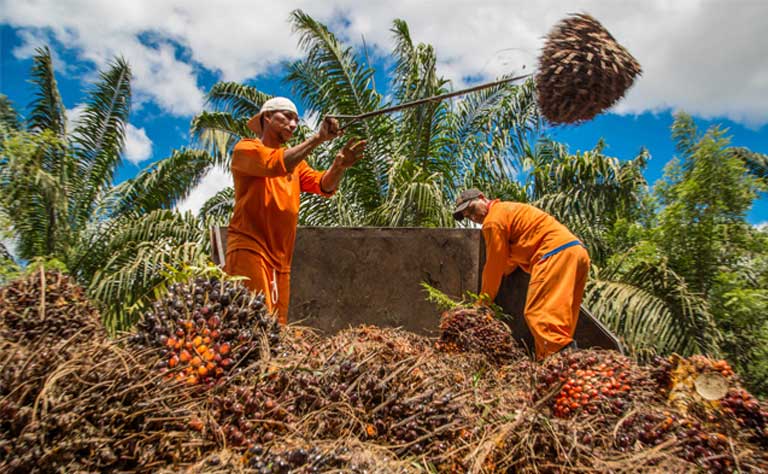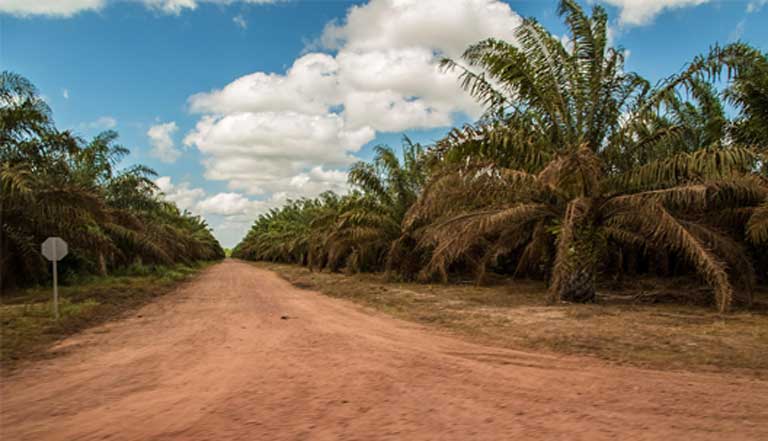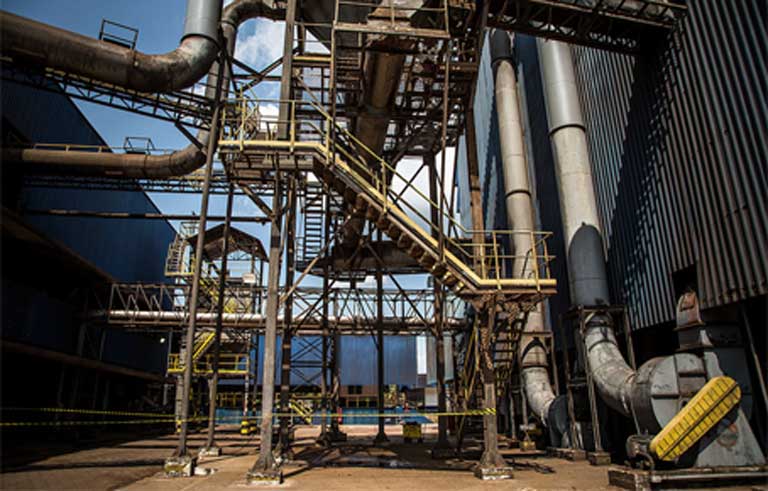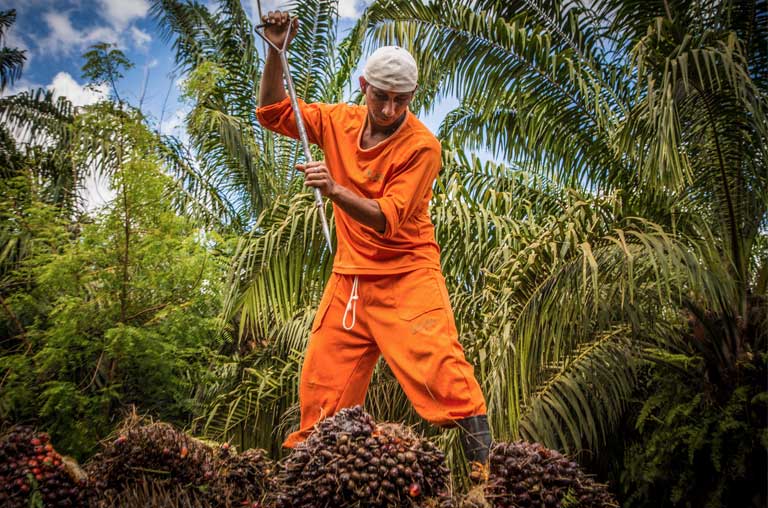- Brazil’s Sustainable Palm Oil Production Program (SPOPP), launched in 2010, aims to prevent primary and secondary forest clearing for new oil palm plantations in Legal Amazonia. As part of the plan, a bio-physical suitability zoning map excluded legally protected parks, indigenous reserves and intact forest areas from those areas available for oil palm cultivation.
- With 31.2 million hectares (120,463 square miles) of degraded land existing in Legal Amazonia that could be put into oil palm production without severe ecological consequences, it was thought at the time that there would be no need for deforestation by the industry. A recent study gauges SPOPP’s success from 2006 to 2014.
- The study surveyed oil palm cultivation over a 50,000 square kilometer area in Pará state, finding that 90 percent of production expansion over that time occurred on former pasture, not forest. In fact, direct conversion of intact forest to oil palm declined 4 percent from 2006-2010, to less than 1 percent from 2010-2014 in the study area.
- Researchers fear that major deforestation due to an oil palm production boom could occur in the near future if transportation infrastructure is markedly improved, and if Brazil’s economy, political and institutional stability increases. The study didn’t address escalating conflicts between Amazon oil palm plantations and traditional communities.

In 2010, Brazil launched its Sustainable Palm Oil Production Program (SPOPP) to encourage producers of oil palm (known locally as dendê) in Legal Amazonia, and especially Pará state, not to clear primary or secondary forest for their plantations but, instead, use already cleared land of which the region possesses a large amount.
It was hoped then that Brazil, a late arrival as a global oil palm producer, would learn from the mistakes made by the early commercial growers, notably in Indonesia and Malaysia, where large tracts of rainforest were cleared in haste to increase output and meet soaring market demand.
SPOPP was introduced in response to growing concern over the potential environmental impacts of an expected huge expansion of oil palm cultivation in the Amazon. Among those sounding the alarm were Mongabay founder Rhett A. Butler and Mongabay board member and scientist William F. Laurance, who published a study surveying those potential impacts in 2009. Together they warned:
Preliminary analyses of temperature, rainfall and soil variables suggest that almost half of Brazilian Amazonia — nearly 2.3 million square kilometers (880,000 square miles) — is suitable for oil palm cultivation, an area far greater than available for mechanized soy or sugarcane.
But the consequences of developing all of that potential, the authors cautioned, could be environmentally devastating:
[P]alm plantations are biologically impoverished, even relative to heavily logged forests in the tropics.… Key ecosystem services are also seriously diminished in oil palm plantations. On average, such plantations store less than 40 percent of the carbon found in native forests.… At present, intact forests in the Amazon are a massive carbon stock, with forested lands suitable for oil palm storing around 42 billion tons of carbon, an amount equivalent to all global, anthropogenic carbon emissions for six years.
To support SPOPP, the Brazilian Agricultural Research agency, EMBRAPA, created a bio-physical suitability map, entitled “the “Agro-ecological Zoning of Oil Palm Cultivation for Deforested Areas in the Legal Amazon” (ZAE). That map, even after excluding legally protected parks, indigenous reserves and intact forest areas, demonstrate that there was no need to fell forest for oil palm cultivation. That’s because Legal Amazonia had a huge stock of already cleared land — 31.2 million hectares (120,463 square miles), that could be put into production without severe ecological consequences. Alone, this vast area of degraded land amounted to nearly two-thirds of the total world area planted with oil palm in 2010.

The ZAE map was drawn up with an unusually high level of intergovernmental coordination. Importantly, Brazilian authorities also agreed to give teeth to SPOPP by making it illegal to breach the ZAE: any farmer cultivating oil palm in areas excluded by ZAE would not qualify for environmental licenses or public credit.
Seven big Brazilian companies account for 90 percent of palm oil production in Legal Amazonia. They plant palms directly on their own land and buy the berries from small-scale farmers who receive seedlings; fertilizer, pesticides and other soil amendments; and technical assistance from the big companies. The ZAE regulations apply to all producers.
The government hoped that its licensing prohibition and credit penalties would encourage the companies to play by the rules and not deforest heedlessly, infringing on regulations and confident of not being held accountable, as had so often happened with Amazon agricultural expansion in the past.

Has SPOPP succeeded?
New research, published in Environmental Research Letters, evaluates oil palm cultivation and resulting deforestation from 2006-2014 in a study area covering 50,000 square kilometers (19,300 square miles) in Pará state — where nearly all commercial palm oil production in the Brazilian Amazon occurs. That area had already suffered extensive deforestation before oil palm arrived there, with large swathes of deforested land available for growers.
The study, led by Elinor Benami, from Stanford University, sought to discover the areas into which oil palm had moved across that time period. Using satellite monitoring to map the study area, the researchers correlated their findings with regional land use experts at EMBRAPA and with the seven big companies.
The study’s conclusions regarding deforestation were broadly positive, with 90 percent of oil palm production expansion from 2006-2014 occurring on land that had once been pasture, not forest. In fact, direct conversion of intact forest to oil palm declined from about 4 percent of the study area in 2006-2010, to less than 1 percent between 2010-2014.
“These figures rank among the lowest studied rates of deforestation associated with oil palm expansion in the world, suggesting that coordinated oil palm development [which avoids] deforestation is possible,” Benami told Mongabay.
However, the authors did qualify their conclusion in an important way. They were not confident, they said, that these encouraging results would be repeated in the future.

This is because oil palm expansion did not take off as rapidly as had seemed likely in 2009. Although the industry grew in Brazil by over 200 percent across the study period, it only covered 219,000 hectares (541,160 acres) by 2014. This is less than 1 percent of the more than 30 million hectares of cleared land that ZAE considers to be potentially available for oil palm cultivation in Legal Amazonia.
The main reason for this slow start appears to be the failure of Brazilian plantations to produce palm oil at a competitive price, a reality partly attributable, says the study, to the poor quality of Brazil’s transportation infrastructure.
Efficient transport links are crucial to production, as oil palm fruit deteriorates rapidly once picked and, if high quality oil is to be made, the fruit bunches need to be delivered to the mill within 24-48 hours. However, many Amazon roads are unpaved and prone to being impassable after heavy tropical rains. This results in losses, adds to costs, and deters producers.
Another factor is Brazil’s long-running economic, political and institutional crisis. An example: the mining giant, Vale, is the world’s largest iron exporter, extracting ore from a massive open-pit mine in Carajás, also in Pará state. In 2011, the firm bought a controlling share of Biopalma, one of three companies that account for over three-quarters of the region’s palm oil production. In 2012, Vale inaugurated a large plant for extracting biodiesel from palm oil and announced plans to build another, even larger one. But Vale was ultimately forced to scale back its plans when the Brazilian economy slowed drastically and the national government became mired in a huge and on-going corruption crisis. Transnational agribusiness companies similarly remain cautious around Brazilian oil palm investment.

Is Amazon oil palm production poised to take off?
These past setbacks may well prove to be temporary. When transport links eventually improve, production costs will likely fall, and Brazilian producers may be able to compete more effectively on the world market. In fact, the Temer administration has shown great enthusiasm for major road, rail, and port development projects, although many are at a standstill because of the ongoing economic and political crisis. At the end of last year, the government said it would be restarting more than 7,000 of these stalled infrastructure projects by the end of 2018. Analysts say this is a very ambitious goal, because the government depends on uncertain private investment for many of these projects.
But eventually, the Brazilian economy will recover, perhaps sooner than many have predicted, with the International Monetary Fund (IMF) recently revising upwards its earlier forecast of Brazilian GDP growth in 2018 to 2.3 percent. GDP grew by a modest 1 percent in 2017. Once Brazil again enjoys higher economic growth rates and transport infrastructure improves, Pará’s oil palm producers may experience the boom they have long hoped for. It is then that the SPOPP will be truly tested.
The authors warn that, “should demands for oil palm significantly increase,… the pressure to deforest likely will increase, too.” Though the authors find it difficult to predict how SPOPP will perform, there is reason for concern: the study found that roughly 60 percent of oil palm plantations border on forested areas that are a mere 10 meters away.

The researchers fear that, if plantations want to increase production quickly, they may be tempted to expand into those neighboring forests. And that might be a wise economic choice, as the producers could easily expand their oil palm croplands, while continuing to use already existing transport links to move the fruit to mills.
However, they say, it is possible that Brazilian farmers will react in a different way, deciding that their “USP” — the Unique Selling Point differentiating their product from that of their competitors — is environmental sustainability. In other words, as the study puts it, producers may decide to develop “a reputation as a zero or low deforestation producing region (eg. certificated by the Roundtable on Sustainable Palm Oil, RSPO)” so as to “distinguish Brazilian production among companies seeking to source ‘green’ palm oil products.” This would also enable Brazilian producers to charge more for their product, compensating in part for their higher outlay on labor, compared with Malaysian and Indonesian producers.
The World Wide Fund for Nature (WWF) has already ranked Agropalma as “among the most sustainable oil palm producers globally.” Agropalma made a commitment to zero-deforestation back in 2001 and, thanks to company support, some of the small scale farmers it works with became the first smallholders in Latin America to receive RSPO certification. It is also partly thanks to Agropalma that Brazil today has one of the world’s highest national proportions of RSPO-certified oil palm production.

The Amazon’s cattle grazing deforestation loophole
While the news around oil palm production to date has been environmentally positive, it does not mean that on-going deforestation has halted in Legal Amazonia.
The researchers found that, while very little forest in the study area was felled to plant oil palm, over a hundred times more forest was cut down for other purposes — especially via a process known as “indirect deforestation,” by which rainforest is converted into new cattle grazing areas, with former pastures then converted into croplands.
While the authors see little evidence of indirect deforestation occurring to make way for oil palm plantations, it seems clear that SPOPP by itself would not legally prevent such deforestation. A similar dilemma currently plagues the Amazon Soy Moratorium, although here there is much clearer evidence of indirect deforestation, with farmers officially respecting the moratorium by not directly clearing land for crops, but rather, moving cattle off of recently-cleared pasture, then growing soy on the formerly grazed land.

Nazido’s story
Another serious issue outside the scope of the new study is the way in which oil palm expansion has emerged as a threat to traditional communities in the region.
On 15 April, Nazildo dos Santos Brito, from the Quilombo Turê III, was murdered as he was travelling home on his motorbike. A descendent of runaway black slaves, he was shot in the back and head and, in what appears to have been a deliberate act to show that he was the victim of a political execution, not a mugging; his belongings were not taken.
His death, it has been suggested, was intended to intimidate.
Nazildo, a former president of the Quilombolas Remnant Residents and Farmers Association of Alto Acará, was involved in a bitter conflict with oil palm producer Biopalma. In 2015, he headed an occupation of a Biopalma palm oil factory, rallying members of other quilombolas (traditional communities made up of descendants of runaway slaves) and Tembé indigenous activists.
The protesters wanted to draw attention to the crimes they said the company was committing — evicting families from land they had long inhabited and polluting rivers with pesticide runoff from its oil palm plantations. Biopalma had brought eight prosecutions against Nazildo, charging him with disturbing the peace, invasion, robbery and other wrongdoing.
Nazido had long been receiving death threats, winning the right to official protection, night and day. Though, in fact, no police officers were ever sent to guard him. He is the third leader in the region to have been assassinated in the last three months.


Paratê Tembé, an indigenous leader, is currently receiving death threats: “Here we live under constant threat and we have developed our own system of protection because we know that there is a price on our head,” he told Amazonia Real. The indigenous people are angry at the continued pollution of their rivers by agribusiness and say they have evidence that some growers are using banned pesticides, such as acutely toxic endosulfan.
At the root of much of the ongoing land conflict is EMBRAPA’s failure to include quilombos and traditional communities among the legally off limit areas for oil palm cultivation in its 2010 agro-ecological zoning. Adding to the problem, many traditional communities and quilombolas, while possessing proof of long occupation of their lands, lack land deeds, with the process for registering land ownership with the government both lengthy and convoluted.
As a result, the quilombolas have emerged as a political force in recent years, as they resist heavy pressure from the ruralistas, elite large-scale farmers who want to take over their lands. These conflicts have intensified since Michel Temer became president in 2016, especially after his Chief-of-Staff sent instructions for all work on quilombos’ demarcation to be halted. Temer’s administration and the congress continue to be heavily influenced by the bancada ruralista, the agribusiness lobby.
While some traditional families have welcomed oil palm cultivation because it brings jobs, analysts have expressed concern. In a report published in 2014, Repórter Brasil found that some workers on oil palm plantations were being badly treated and paid less than Brazil’s minimum legal wage. Other researchers have questioned the classification of oil palm as a “sustainable crop,” noting that its production requires heavy pesticide use, along with an enormous amount of water.
With the global market for palm oil projected to grow by 7.2 percent between 2016 and 2021, from $65-93 billion, Brazilian agribusiness could be poised to profit from an oil palm production boom. Should this surge occur, SPOPP appears unlikely to be sufficient in itself to prevent major Amazonian deforestation and potential abuses of quilombolas and traditional communities.
Citation:
Benami et al, Oil palm land conversion in Pará, Brazil, from 2006–2014: Evaluating the 2010 Brazilian Sustainable Palm Oil Production Program, Environmental Research Letters, 15 March 2018, http://iopscience.iop.org/article/10.1088/1748-9326/aaa270/pdf
FEEDBACK: Use this form to send a message to the author of this post. If you want to post a public comment, you can do that at the bottom of the page.

